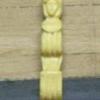MORE HANDBOOKS ARE ON THEIR WAY! We will let you know when they get here.
×
-
Posts
111 -
Joined
-
Last visited
Reputation Activity
-
 Torrens got a reaction from Scottish Guy in Warning points...
Torrens got a reaction from Scottish Guy in Warning points...
I've noticed that underneath my name, on all of my posts, it says 0 warning points. What does this refer to? I haven't seen it on anyone else's posts???
-
 Torrens got a reaction from Michiel in 1:60 H.M.S. Beagle - OcCre
Torrens got a reaction from Michiel in 1:60 H.M.S. Beagle - OcCre
Excellent choice for a kit! However, comparing the photos posted here to the drawings in Karl Heinz Marquardt's Anatomy of the Ship HMS Beagle (1997) it looks very crude. It would probably require a significant amount of correction and/or scratch building to bring the model up to a reasonable standard of accuracy (the sails are certainly out-of-scale and should be discarded!).
-
 Torrens got a reaction from EricWilliamMarshall in Legacy of a Ship Model by Rob Napier
Torrens got a reaction from EricWilliamMarshall in Legacy of a Ship Model by Rob Napier
I have recently taken delivery of the book Legacy of a ship model: examining HMS Princess Royal, 1773, by Rob Napier, published by Seawatch Books, Florence, Oregon, USA. It was first published in 2011.
First of all this is an outstanding production! A beautiful book! The publisher's are to be commended on the quality of production. It is landscape format, printed on quality paper and is profusely illustrated with numerous full-colour photographs, very clear line drawings (many multi-coloured), reproductions of contemporary marine paintings and x-rays showing internal fittings, fixtures and construction techniques. In terms of the writing, the author is as competent an author as he is a skilled craftsman; his text, his technical descriptions, are all easy to follow and flow equally as well.
In essence this book is a very detailed and comprehensive record of the almost complete restoration of a significant model from the Henry Huddleston collection housed in the museum of the United States Naval Academy, Annapolis, Maryland. The author, a highly skilled and talented professional ship model maker, describes the dismantling of the model and every single step required to restore and/or rebuild those parts of the model that so required this work.
Included with my copy was a CD that has a short film about the project.
In the author's own admission what he has presented here through this book is a record of his work so that future generations of restorers might better understand what has been done; what was original and what had to be replaced in the restoration process. Nothing is missing and nothing has been over-looked. The book opens with a history of the original ship.
Through the dismantling and restoration process an insight is offered into the highly developed techniques used when the model was constructed. Sadly, but inevitably, there are no records as to who the various model makers were, but their legacy is a beautiful example of the ship model makers art from the 18th century.
Rob Napier is to be congratulated on a significant contribution to the literature of ship model making and to our better understanding of the techniques of earlier generations.
-
 Torrens reacted to Boccherini in Harriet McGregor by Boccherini
Torrens reacted to Boccherini in Harriet McGregor by Boccherini
Wefalk,
thanks for the suggestion. I've previously tried a home made chisel (from the shaft of a broken 0.5mm drill bit), I found it awkward to use effectively. The diamond coated blade sounds like a good idea. None of my jewellers files are small enough. The tapered tips are ok, but they become too large too quickly for comfortable use. Any suggestions on where to purchase the diamond blades? I've found some blades for a jewellers fret saw, though they appear to be a rare item.
The block tumbler has worked out quite well. I based the design on Grant's (gjdale) version, with a few variations. There were a couple of flanged bearings (left over from a rope walk built several years ago) that came in handy. 65mm sewer pipe and some glue on caps provided the body and ends. The caps are not permanently fixed, the pipe ends were sanded down to allow the caps to 'slip fit'. I've used 3 grades of sandpaper: 180, 240 and 320. The drill powered set up with miscellaneous bits of packing and a vice for support will be temporary.....eventually. I'd rather be modelling.
-
 Torrens reacted to Boccherini in Harriet McGregor by Boccherini
Torrens reacted to Boccherini in Harriet McGregor by Boccherini
Thanks for your comment Tony.
I've decided to make a batch of blocks, there is a need for some for the bunt lines under the tops. There is still a reasonable supply of the lemon wood to work with. All the preliminary work was done with the mill, the rest is just old school: file, sand, cut and sand. The end result is not too shabby.
One of the "problems" with this hobby are the rabbit holes. Just when I get on a roll, I start to wonder if an additional piece of machinery might help. Work then stops to accommodate the new fixation.......in this case, a block tumbler.
-
 Torrens reacted to Boccherini in Harriet McGregor by Boccherini
Torrens reacted to Boccherini in Harriet McGregor by Boccherini
Thanks for your interest Tony.
I've planked the tops, and made an ''iron'' rim for the mizzen top.
The rim was awkward, I brazed one end whilst flat on a fire proof sheet, then set the rim in a vice with wire to hold everything in place to complete the joint. Ended up having to re solder the opposite end to obtain the extra length to get it to fit the top. It's a good thing there was a bit spare to allow the adjustment.
I've ditched the phone and replaced it with my trusty, old 8MP Canon, so no more weird uploads.
Grant.
-
 Torrens reacted to Boccherini in Harriet McGregor by Boccherini
Torrens reacted to Boccherini in Harriet McGregor by Boccherini
Thanks Wefalk.
started working on the tops. At least one of the pictures is the right way up. I need to figure out why the pictures get inverted between my folder and the uploads.
-
 Torrens reacted to Boccherini in Harriet McGregor by Boccherini
Torrens reacted to Boccherini in Harriet McGregor by Boccherini
It's only been 5 years. Happy new year to all. I've started on the masts. There were some other photos, but they kept uploading upside down. Anyone know why this would happen?
Grant.
-
 Torrens reacted to Boccherini in Harriet McGregor by Boccherini
Torrens reacted to Boccherini in Harriet McGregor by Boccherini
The dead eyes were rough formed with a shaped cutting tool and finished off with small files.
I initially tried drilling the dead eyes in the traditional fashion, without much success. The mill provided a solution, using the dividing head with timber posts turned to fit inside providing support whilst drilling. The top of the post are a slightly smaller diameter than the dead eyes, allowing the jaws to hold them firmly. The larger dead eyes are 4.9mm dia, and the smaller 4.1mm dia..
Grant.
-
 Torrens reacted to Boccherini in Harriet McGregor by Boccherini
Torrens reacted to Boccherini in Harriet McGregor by Boccherini
The dead eyes are made from lemon wood harvested from a tree cut down 7 years ago to make way for an extension to the house. It was quarter sawn, the ends dipped in wax, then left to dry in my workshop. The pieces used didn't warp too much, and were surprisingly easy to roughly square with a hand plane, then finish on the table saw.
"Rounding" the square section timber was done in a simple jig using a thumb plane. The pieces ended up as 16 sided, and rounded enough to fit into the collets on the lathe.
-
 Torrens reacted to Boccherini in Harriet McGregor by Boccherini
Torrens reacted to Boccherini in Harriet McGregor by Boccherini
Thanks Nils.
The cap rails are now fitted and pinned in place. Like the pin rails, they were made in 3 sections with scarfed joints. These won't be permanently fixed until the slots to accommodate the deadeye straps have been cut in. I'm thinking this might be easier done off the model.
I have made a prototype deadeye/strap assembly. Currently busy making deadeyes.
Grant.
-
 Torrens reacted to Boccherini in Harriet McGregor by Boccherini
Torrens reacted to Boccherini in Harriet McGregor by Boccherini
I thought it prudent to make and install the bulwark fairleads for the sheets from the main and fore courses before fixing the pinrails. The sheaves are 1.4mm dia x 0.9mm thick, turning them on the lathe was not difficult, finishing them off proved to be quite fiddly. Holding them in a wire eye in pliers made things easier.
I am not sure as to the correct size of the fairlead assembly, lacking any specifications. I have tacked a prototype to the bulwark (prior to cutting it in), to get an idea of the proportions. Could anyone with knowledge of these things let me know if it looks about right.
Given the era (1860's), is it possible the sheave would be in an iron housing bolted to the bulwark?
Grant.
-
 Torrens reacted to Boccherini in Harriet McGregor by Boccherini
Torrens reacted to Boccherini in Harriet McGregor by Boccherini
Been off with the fairies for eight months, thanks for the comments, my apologies for not responding earlier. Hey bolster55, thanks for the information, is the book about the Harriet McGregor, or is she just part of it?
Pin rails were made up in 3 sections a side with scarfed joints.
Grant.
-
 Torrens reacted to Boccherini in Harriet McGregor by Boccherini
Torrens reacted to Boccherini in Harriet McGregor by Boccherini
I have no idea of the name for these parts added, but it's one less fiddly project completed.
Grant.
-
 Torrens reacted to Boccherini in Harriet McGregor by Boccherini
Torrens reacted to Boccherini in Harriet McGregor by Boccherini
Thanks for the comments and likes, gentlemen. Finally had time to finish the capstan. I had a bit of trouble with the Blacken It, took 3 attempts to get it right. This has never happened before. 24 hours after the second attempt, there were large patches of of a pale green powder, which rubbed off easily enough, but the rubbing caused some of the blacking to flake off.
Grant.
-
 Torrens reacted to Boccherini in Harriet McGregor by Boccherini
Torrens reacted to Boccherini in Harriet McGregor by Boccherini
Thanks David and John. Capstan V2.0 was worth the extra work, it's much better looking than the original. The whelps were made from some 1mm wire filed down to half its thickness, cut to length and drilled to take locating pins. Contact cement was used to hold the whelps to the capstan whilst drilling. The loop of wire used to make the pins made it easier to solder and gave me something to grip while finishing the shape of the whelps. I ended up having to use a full size oxy/acetylene torch to heat it up (my little butane torch was way "under powered"), I think it was slightly overcooked as the solder left some rough patches around the whelps. They have been mostly scraped/rubbed out, but are still slightly visible.
Grant.
-
 Torrens reacted to Boccherini in Harriet McGregor by Boccherini
Torrens reacted to Boccherini in Harriet McGregor by Boccherini
rpeteru, Tom & Michael, thanks for your taking the time to leave a comment.
Michael, the idea of the locating pins is something I picked up from reading Underhill's books. I envy your machining skills to do that out of a solid metal piece, my abilities in that area are not up to that kind of work as yet.
I decided to experiment on this capstan with soldering the whelps on, being only 1mm x 0.5mm, I had some concerns of them melting before the solder ran. Everything worked out nearly perfectly first time. Nice to know this happens occasionally. First picture after "pickling", then after blackening.
-
 Torrens reacted to Boccherini in Harriet McGregor by Boccherini
Torrens reacted to Boccherini in Harriet McGregor by Boccherini
John, Bob, Mark & Pete,
thank you for the kind words.
First attempt on the body of the capstan. I'm not sure the proportions are quite right, back to the drawing board.
Grant.
-
 Torrens reacted to Boccherini in Harriet McGregor by Boccherini
Torrens reacted to Boccherini in Harriet McGregor by Boccherini
E&T, thanks for the comment.
I decided to solder the "bolts" to the bollard base plates, this process taught me something new about solder paste. When doing multiple joints on one piece, you need to heat the whole piece and do them simultaneously, or only put paste on the parts you are heating. I made the mistake of putting paste on all the bolt heads, then trying to do one end and then the other.....disaster. By the time I started heating the other end, the solder paste had dried out and would not make the joint. Had to pull the bolts out, clean off the crud and re-do them several times before realizing the cause and solution. This process messed the whole bollard assemblies up a little, they don't look as good as they might've. Probably would've been better to just push the bolts in after epoxying the bollards to the deck. Frustrating but instructive time.
After pickling and then scrubbing in acetone:
In place after chemical blacking.
Next project is the capstan base plate. The copper ring is from a piece of 1/2'' copper pipe. The inside was turned to the correct diameter with a boring bar, then the outside turned down to the correct thickness. Lugs were milled into the bottom of the ring, then the ring was half cut from the pipe at the correct height, the final separating cut had to be done with a jewellers saw. It proved impossible to separate the ring from the pipe with the lathe cut off tool, it collapsed due to the lack of thickness. This piece took 3 attempts to get it right, more instructive frustration. The base plate is 16mm (0.64") diameter. The pieces were then soldered together.
Another lesson re learned (I am still a novice lathe/mill user), if you are removing and replacing a work piece in the lathe chuck, always make sure it goes back in the same place in the chuck. I now have a mark on one of the chuck jaws (to differentiate it from the others), I file a small mark in the work piece where it meets the end of this jaw.
-
 Torrens reacted to Boccherini in Harriet McGregor by Boccherini
Torrens reacted to Boccherini in Harriet McGregor by Boccherini
Bollards. Some of the details/proportions for these are approximate/educated guesswork. The base plates are 14mm x 6mm x 0.6mm (approx 1/2'' x 1/4" x 0.024"); the bitts, 7mm x 3.5mm dia.. I have included a brief description of the process, this may be useful to those considering trying their hand at soldering.
I found the best results for soldering were obtained by putting some solder paste on the base of the bitts and pushing them down onto the base. The excess squeezed out around the bottom helped to form a fillet when the joint was completed. Same technique was used for the bar between the bitts, with the addition of some paste placed on at the ends. If the assembly has been heated correctly, solder should flow out around the pins on the underside of the base (pic 5). The assembly needs to be heated with care due to the difference in the mass of the parts, too much heat on the copper could cause it to sag or melt before the brass parts are hot enough for the solder to run. Another complicating factor in heating is the difference in melt temperatures, brass is lower than copper.
Grant.
-
 Torrens reacted to Boccherini in Harriet McGregor by Boccherini
Torrens reacted to Boccherini in Harriet McGregor by Boccherini
Whisker booms continued. I soldered a couple of pins to the whisker booms to fix them firmly to the catheads. Cathead sheaves are 4mm dia x 0.7mm thick, they are on a 0.5mm drill bit. All the parts were chemically blackened. The construction method is a variant of that shown by Harold Underhill in his Plank On Frame book.
Grant.
-
 Torrens reacted to Boccherini in Harriet McGregor by Boccherini
Torrens reacted to Boccherini in Harriet McGregor by Boccherini
For the moment, I have been working on the forward section, completing the structure over the starboard hatch/companionway (I have no idea of its correct name). I shaped a block of MDF then covered it with veneers, and added some hinge pins and a handle to complete the look.
The dimensions for the catheads are only best guess, the plans are a little vague. Does anyone have information regarding the diameter and width of the sheaves in catheads, also the length of the slots to accommodate them? The out board end of the catheads are 300mm (12") square.
Grant.
-
 Torrens reacted to Boccherini in Harriet McGregor by Boccherini
Torrens reacted to Boccherini in Harriet McGregor by Boccherini
Having finally completed the Triton x-section, it's time to return to this, my first attempt at a plank on frame scratch build. It is the Tasmanian built barque Harriet McGregor from the plans by Harold Underhill, scale is 1:60. Originally started before Dry Dock Models was in operation, I lost interest in it due to the number of mistakes made in the earlier stages of construction that began to affect the build at the current point. The worst mistake: frame extensions above deck level should have been reduced in thickness prior to the waterway installation. I have done what I can to rectify this without pulling the waterways out (not practical), but will have to live with the consequences and work around the problem, hoping other small details will draw the eye from the larger inaccuracies. Having said all that, the model to date does bear a vague resemblance to the plans.
Grant.
-
 Torrens got a reaction from Luekutus in 1:60 H.M.S. Beagle - OcCre
Torrens got a reaction from Luekutus in 1:60 H.M.S. Beagle - OcCre
Excellent choice for a kit! However, comparing the photos posted here to the drawings in Karl Heinz Marquardt's Anatomy of the Ship HMS Beagle (1997) it looks very crude. It would probably require a significant amount of correction and/or scratch building to bring the model up to a reasonable standard of accuracy (the sails are certainly out-of-scale and should be discarded!).
-
 Torrens got a reaction from Roger Pellett in 1:32 Fifie – The Scottish Motor Fishing Vessel by Amati
Torrens got a reaction from Roger Pellett in 1:32 Fifie – The Scottish Motor Fishing Vessel by Amati
It’s not a quibble, but a perfectly legitimate observation - in this case based on practical, sea-going experience on Scottish fishing boats. If you’re happy for a model to be inaccurate, that’s your choice, but don’t criticise others if they are of a different opinion.





.thumb.jpeg.fc5d633a7b34428fcf19419a73d56d55.jpeg)
